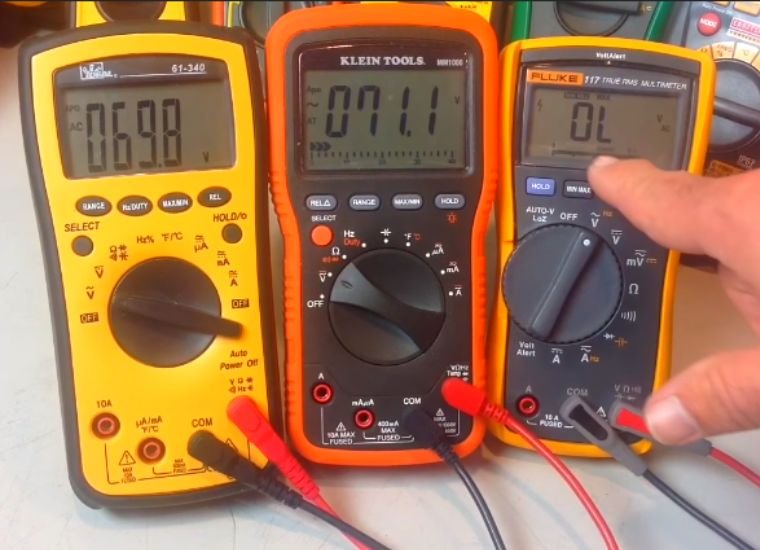Last Updated on September 12, 2022
Fluke is a well-known USA-based tool company that manufactures a variety of testing and measuring tools, including troubleshooting tools, multimeters, electrical testers, digital multimeters, temperature meters, etc. Many professionals like their products due to their superior quality. You must see “OL” in there if you have a digital Fluke multimeter. OL means open loop. However, the significance of this OL is the same for all market-available multimeter brands.
What Does OL Mean on a Fluke Multimeter?
One typical problem you have while using digital multimeters is OL. And this is consistent across all brands of this gadget. Open loop is the definition of the term OL. And this problem represents something distinct for many different tests as well as for numerous multimeter modes. The absence of continuity in the positive and negative probes or voltage when the circuit exceeds the test limit unit is the definition of this OL in fluke or any multimeter. And since the circuit is not yet complete, there is no resistance to measure. And you can see that when you measure the ohms of a damaged fuse. Therefore, if the gadget has resistance, the circuit has no problem. Another explanation for this problem is a circuit that is overloaded.
Discontinuous electric flow
The key indication of OL’s continuity problem is a continuous flow of electricity down a conductive route. And this issue arises when the circuit has no continuity because there are problems at two spots in it. Therefore, the meter displays OL on the screen; as I previously mentioned, there is an OL issue with the multimeters. Additionally, it occurs when a circuit has an open loop or line. You only need to inspect the wire to see whether it has any faults in order to resolve this issue from your system.
Circuit voltage
This OL also includes a section on checking the circuit’s voltage. The electrical potential or pressure of the current in two points of the circuit must be known. A lot of individuals also use multimeters to measure voltage, and the range they employ depends on how many volts they wish to measure. Thus, the voltage range is overwhelmed when you find OL on the screen.
Resistance
The OL also occurs when testing the resistance in a similar manner. The multimeter will display the OL in the sensor when you introduce an infinite resistor into the circuit. And it’s crucial to find a solution to this problem. Because low resistance makes it easier for electricity to flow and higher resistance in the circuit causes the flow to slow down. As a result, there are two possible causes for this resistance. The first one was already discussed. Another one is when two multimeter probes are interrupted.
Conclusion
So we talk over all of the potential causes of the OL on the multimeters’ screens. And this reading is not good since it suggests that there may be an electrical circuit problem. It’s likely that it might cause a significant accident if you don’t take it seriously. Therefore, attempt to investigate the cause of this reading using multimeters of any brand.


